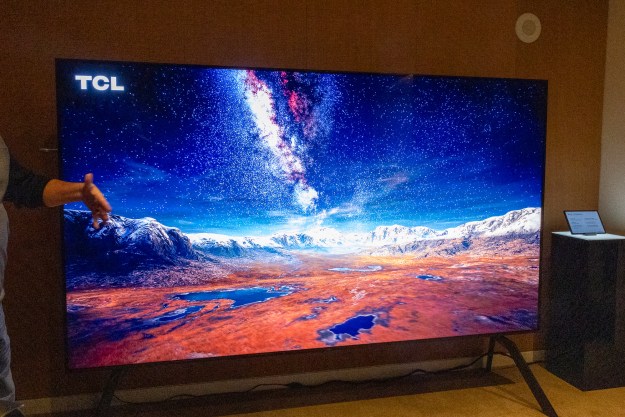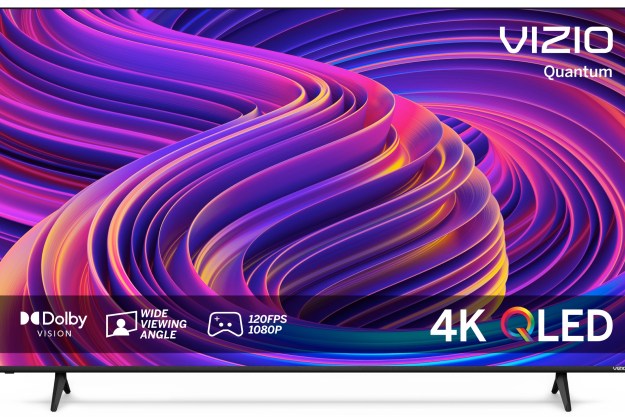Watching the Super Bowl is easy – flip on the TV, tune to the right station or app, and you’re set for what will be the most grandiose single-day sporting spectacle of the year. Producing the Super Bowl broadcast? That’s a different story. And as if getting the big game delivered to millions wasn’t complicated enough, Fox Sports decided to go big this year and air its daily lineup of cable sports shows from South Beach in Miami, Florida, for an entire week.

Oh, and Fox will also air Super Bowl LIV in 4K HDR for the first time. That in and of itself is a big undertaking, one that Fox has been preparing for over the past few years. Why is this a big deal? Because HDR will take the Super Bowl, which is already a spectacle of epic proportions, and make it look like you’re sitting in the stadium, all from the comfort of your favorite seat in front of a television.
That’s a tall order. To see how it’s done, Digital Trends spent a few days embedded with the Fox Sports production crew. The unfettered access is key to helping us bring you an exclusive behind-the-scenes look at how Fox brings you the national holiday that is the Super Bowl.
Way too serene
It’s an uncharacteristically cool, foggy day in Miami. As I exit my car with my videographer, Rich, I comment on how eerily still and calm the scene is considering the game airs in just three days. Then again, this is the front of the house. Certainly, I’m in the eye of the hurricane. Fox Sports’ production compound must be a madhouse of activity.

It isn’t.
Halfway around the back of the stadium, I arrive at ground zero: A massive complex of 53-foot trailers. Fox Sports crew members in the compound seem too relaxed. A group exits a food trailer with plates of breakfast and coffee cups in hand, laughing jovially at some inside joke, while a lone crew member meanders by with a $30,000 4K HDR OLED reference monitor under his arm. Don’t these people know they are days away from one of the biggest broadcasts ever?
The vibe here is calm.
They absolutely do. Turns out, everyone involved with this massive-scale production is a total pro. They know exactly what they’re doing. They just make it look easy.

“The vibe here is calm,” says Michael Drazin, a broadcast engineering consultant working on the big show. “The unique part of when you get to do the really big event at the end of the season is you have the best of the best here.”
This for a production unlike anything I or you have ever seen up-close before. Drazin makes it seem like no big deal, but the sheer scale of what I see is overwhelming.
Inside the Hard Rock Stadium are about 100 cameras, some high-speed, some 4K, some 8K, some hung by wires high above the playing field, others in pylons staked at the end zones, all of them poised to capture every inch of action from every conceivable angle.

The stadium has the infrastructure to support the cameras, with untold miles of cabling leading from each camera station to a central junction box roughly the size of a shipping container. From there, Fox runs many more untold miles of cables to several of its production trucks. Some of these cables are roughly the circumference of a boa constrictor that’s just swallowed up a Florida gator. Everything about this seems huge. Probably because it is.
But it is inside the production trucks that the real heavy lifting — and not just a little bit of magic — happens.
Bringing you the ‘Bowl in 4K HDR
Of the dozens of talented directors, producers, engineers, video shaders, and colorists I could talk to, Drazin is one guy I absolutely had to speak with.
Drazin has worked with CBS, NBC, and, presently, Fox. This is his 11th Super Bowl broadcast, and when he’s done here, he’ll hop a plane to Tokyo to help NBC out with a little sports thing called the Olympics. Drazin could forget in a day more about imaging science and HDR than I’ve managed to learn in 10 years, and the work he is doing to bring viewers the best picture quality that the Super Bowl has ever been presented in is mind-boggling.
He’s far too humble about it. When I ask him what he does, he mostly dismisses his importance and points to the stellar crew around him.
“My focus here is to build the box around HDR … what that does is let the creatives — the guys in video who actually create the pictures that you see at home, the directors who call the cameras — they don’t need to think about it. They just do their show, they focus on what they do really well.”
To unpack how Fox goes about delivering a 4K HDR broadcast, I start by asking Drazin a question I’ve repeatedly been asked by readers and viewers since I shared the news it would do so: Why are you producing in 1080p HD with

It turns out that not only is producing in 4K not technically feasible, but it would also be a bad idea.
“The basis of the decision between 1080p and 4K really has to do with resources available to do the production,” says Drazin, pointing out that the gear they use today loses 75% of its functionality when they move to
“Say we have a video camera switcher that has 100 inputs. When we use that switcher in 4K, we only get 25 inputs. When we’re doing a football game that is somewhere north of 100 cameras, there’s no possible way we can do this in

In other words, the ability to switch between 25 cameras won’t cut it for any football game, let alone the biggest one of the year.
Then there’s the matter of the game getting delivered in 60 frames per second, which is what helps keep motion smooth and the game looking “live.”

It turns out that 1080p at 60 frames per second delivers really smooth motion, while 4K at 60fps does not. “With
Whether you see it in HDR or SDR, Drazin and his team have gone to great lengths to make sure it looks amazing. Even the 99 percent of viewers who won’t see the 4K
But what will it look like?
Those who do watch Super Bowl LIV in 4K HDR are in for a treat. In fact, there are many

For this year’s game, get ready for colors you’ve never seen on your TV before, detail in every inch of the picture, and spectacular highlights gleaming off the screen. It’s going to be gorgeous, and will transform how engrossing the game is. But it won’t be just the game. It will be everything, including the commercials and the halftime shows.
“The biggest ‘wow’ when you start to watch HDR is it looks like you’re sitting there,” says Drazin.“The two things that you get in
“You’re now seeing much more closely what the real world is from color representation, as well as dynamic range. So all of a sudden, the lights pop out and … you can see the stuff in the shade much better without overexposing the stuff in the sun. From experience to experience and environment to environment, it’s like you’re sitting there.”
Game day week
From the multiple production trucks to the miles of cable, the massive internet delivery infrastructure, the hundreds of screens, and even more hundreds of people needed to build it all and hold it together, the Super Bowl game broadcast itself requires a small town of talent and many millions of dollars.

That used to be enough. But not this year. This year Fox wanted to take the Super Bowl experience to an entirely different level. So, while a small army is hard at work at Hard Rock Stadium prepping for a single day, a small village perched on the sands of South Beach is transforming the Super Bowl into a weeklong interactive experience available to anyone who wants to visit.
“Every time we set out to do something to make our mark on the Super Bowl, it gets a little bigger,” says Mike Davies, senior vice president of field and technical operations. “Back in the day, it was just a day. Now … we’re essentially doing two Super Bowls. We’re doing the one here in South Beach, and the one at the stadium.”
Fox has literally built a village at iconic South Beach. And by that, I mean they actually built a small town on the sand.

This is all in service of providing a Super Bowl experience, all week, to anyone who cares to visit. Everything, every detail, is well-thought-out. It’s the little things, and Fox seems to have gotten them all right. The carpets on the sand are the color of sand. They’re ready for the elements. The cables are hidden. They have a giant video production crew. There’s a volleyball court and a … Ferris wheel??? The result feels like a community. Almost a carnival. Definitely a party.
It’s also Fox’s studio for the week, supported by a production compound almost as large as that found at the Super Bowl location. There are fewer cameras involved, but the production value coming from this station on South Beach will be exactly the same as it is back in Fox’s studios. And it has to be, because Fox is running its suite of daytime sports programming from the beach, every day, for a week, leading up to the Super Bowl.

Why? Davies told me Fox wanted to make a big statement and bring Miami to its viewers while also bringing Miami locals and visitors into their broadcasts. What better way to let fans feel like they’re in the event than by broadcasting from the area’s most iconic beachfront scene?
In a way, this all feels like the old World’s Fairs of days gone by, where technological feats stopped becoming dreams and started becoming reality. That’s how Fox sees the Super Bowl, and that’s how it gets produced.
Davies put it best: “Since we’re stewards of the Super Bowl this year, along with our broadcast colleagues of the world … we want to put it in the best light. Technology has a way of doing that if used in the right way.”
Editors' Recommendations
- What we want to see from the next Apple TV 4K
- Samsung’s new 98-inch DU9000 4K TV is just $4,000. Can it beat TCL and Hisense?
- Vizio’s first 86-inch 4K TV is coming soon, for $999
- Belkin drops a $50 mount for iPhone video calls on Apple TV 4K
- If you don’t see CBS in 4K on YouTube TV, try this






